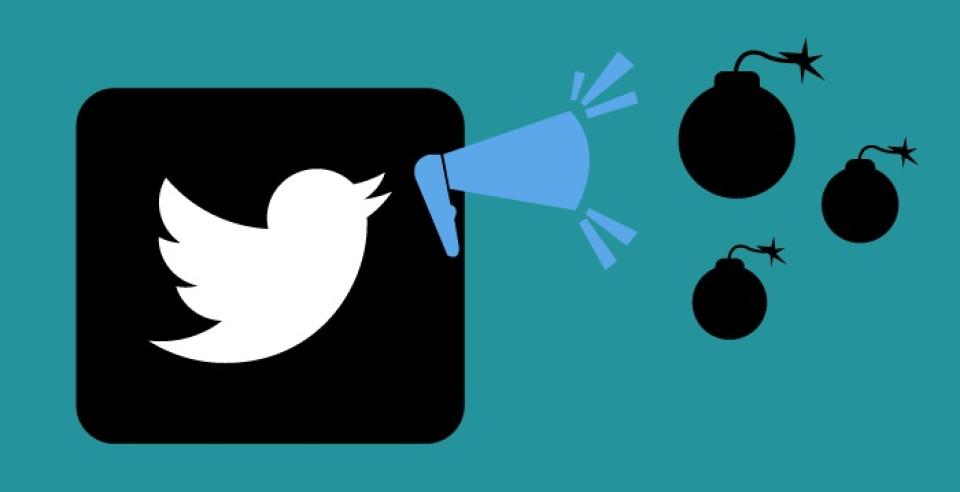
Pakistan was one of seven countries covered by APC’s research project “End violence: Women’s rights and safety online”. The research in Pakistan was done in association with Bytes for All, a human rights organisation that focuses on ICTs. The report, which you can find here, uses three in-depth case studies to assess legal instruments, corporate policies, and women’s access to justice.
Here, GenderIT.org speaks to the manager of advocacy and outreach at Bytes for All, Furhan Hussain, to bring us a closer look into the research findings.
GenderIT.org: Your study speaks of technology as a new tool for violence. How does technology contribute to violence?
Furhan Hussain: We are not blaming technology for violence; technology can be used for both good and bad purposes. What we are saying is that technology is another space for violence that did not exist earlier. The digital world is an extension of what occurs in the physical world, except now there is a larger scope for the violence to be magnified because of how content gets shared online.
GenderIT.org: Is technology-related violence against women (VAW) supplementing or replacing the violence of the physical world?
FH: We have seen that violence that exists offline – such as everyday forms of hate speech and manifestations of a woman-hating culture – are now reflected online. So if a person is a misogynist and adheres to certain stereotypes, and if this person has access to different tools, they will use those tools to express or promote their ideology. In other words,they will use technology as an enabler for harassment and abuse.
Digital and physical violence are connected in other ways as well. In one of our case studies, videos of a girl who was gang raped were used to blackmail her family, and were eventually distributed via mobile phone. She subsequently lost all access to her individual rights – her education was stopped by her family, she was not allowed to go out, and her father suffered a heart attack. When the news media broadcast an interview with the girl and her mother, the ridicule against the family magnified far and wide. In our research, we have seen that the consequences of online violence can be as serious as those of violence offline.
GenderIT.org: Is online violence a backlash – at least in part – to women’s “unrestricted” use of the internet?
FH: In part, yes, because it reflects how society works. The general perception in Pakistan is that a woman is not equal to a man. This is especially so from a religious perspective in the country, and quotes from religious texts are often used to justify this view. Because of the way our society has developed, there is a lack of inclusiveness in all spaces – spaces that are developed primarily by men and for men. It’s the same with online spaces, which men think of as their right and as something they own.
GenderIT.org: Any discussion of the online world seems to raise issues related to freedom of expression. What are the effects of technology-related violence on women’s freedom to speak?
FH: Often when women are harassed online and targeted because of their gender, they became silent and withdraw from those spaces. Some of this may be contributing to a serious lack of women’s participation and leadership in online spaces. When a woman is in a prominent position – a politician, for example – she gets harassed online with sexualised terminology. And since there are not enough women in the internet governance process and other related discussions, and certainly very few in Pakistan, the voices of these women become marginalised; they are pushed out.
GenderIT.org: Anonymity can allow women to use the internet to speak, but it can also be used maliciously by perpetrators of violence. According to you, does anonymity help or hinder freedom of expression?
FH: Anonymity is as important as the right to privacy. Anonymity is you defining your privacy parameters. In Pakistan, where issues related to religion and expression are widespread, such as anti-blasphemy laws and anti-minorities campaigns, anonymity allows a lot of free debate. If an anonymous account is being used for abuse, depending on the quantity and type of the abuse, it can maybe be ignored. But if it’s a criminal offence emanating from an anonymous account, then it clearly falls into the realm of action by intermediaries like Facebook, Twitter, and others – who need to do more than they are doing right now.
GenderIT.org: You mentioned religious fundamentalism – how does it impact violence against women?
FH: In Pakistan, women are held to be inferior, and religion reinforces that cultural view. Since the 1980s (after General Zia), fundamentalism has been on the rise and religion has become an important underlying factor, or enabler, of VAW. So, for example, any rational discussion about gender equality can very quickly slip into religious justification of inequality. Religion-based arguments are used to control women.
GenderIT.org: How do such cultural controls intersect with technology, and what does that mean for women?
FH: The combination manifests in various forms. For example, technology offers a lot more potential for malicious surveillance of women by both state and non-state actors such as corporates or militants. As we saw in the case of the NSA in America, these are flawed systems that can be used to spy on people’s private lives. And if the US is supposed to be a benchmark of free speech and the rule of law, compare that to Pakistan, where intelligence agencies operate beyond law and the military is more powerful than the government. Imagine how surveillance can be used here. In an APC paper I co-authored, we spoke of how a female politician said her phone was tapped and the data was used to blackmail her. Surveillance is used against men too, of course, but when it is used against women, it is happening within the larger context of culturally approved gender violence.
GenderIT.org: The report talks about how language barriers make it difficult for social media authorities to act against abuse. How does this play out in Pakistan?
FH: The majority in Pakistan communicate in Urdu – it’s the unifying language and is often used in Roman script on social media. So if a woman complains about abuse that has occurred, either in Roman Urdu or in the Urdu script, the content may not get removed – as compared to something in English. This points to the fact that Facebook and others do not have enough capacity to deal with abuse in different languages. Facebook says they do have people competent in languages such as Urdu, but maybe they don’t understand the nuances of the language or of slang, or the cultural import of a comment.
Besides, it is not only Urdu – what about Punjabi, Sindhi, Balochi, Pashto? So many other languages in Pakistan are used online. So yes, language is definitely an issue: how should intermediaries address violence where these languages are the medium?
GenderIT.org: Can you suggest how they might do this?
FH: The population of Facebook is more than that of many countries put together and it generates huge revenues. So it does have the resources to address such issues, but instead, it tends to focus on revenue generation. While these companies hire the best qualified people to do these jobs, at the end of the day, it is important to ask: how well are they addressing issues like online violence against women? Have things changed in reality? Addressing language barriers must start with a change in attitude among those who own and run social media – corporations and other intermediaries too – and that’s a big challenge.
GenderIT.org: What was the women’s idea of justice, and did they get it?
FH: Justice has different shades. You can admonish or penalise the perpetrator, but if there is emotional trauma and physical violence, it is difficult to undo that damage. But even in the sense of just criminalising the abuse or taking basic measures against the abuser, the women we interviewed felt nothing was ever done – except in one case where Facebook removed some posts.
In one of our case studies, a civil rights activist with liberal views faced widespread abuse. A social media thread called for her to be raped and killed, and her address was shared online. Many of these threats were not even from anonymous accounts. The woman did not take the case to the federal authorities, since she was unsure whether they would say that she deserved it. Instead, she became silent or careful thereafter about what she said. So how does one speak of justice in such instances?
GenderIT.org: As your research shows, a variety of responses are needed to address technology-related VAW. What are some of the next steps?
FH: Now that we have the research, we can use it as evidence for our advocacy and campaigning. We cannot do only one thing – it has to be a comprehensive approach. It is important for us to generate much greater awareness among women. All the women and girls we have talked to who use digital media have faced some form of abuse or know someone who has. But they are often not very clear about what is happening, and about the nature and extent of the harm. For example, every year, we lead the Take Back the Tech! campaign focusing on the importance of secure online communications and digital platforms. The idea is for women to use technology to reclaim the spaces from which they are being driven out through violence.
But we are a small organisation in a big country, so we are connecting with other organisations to work on issues of gender, technology and violence. Many organisations in Pakistan focus on physical violence but may not consider online violence. So we talk to them about including it in their work.
We would also like to approach as many politicians and policy-influencers as possible. In Pakistan the laws don’t say anything about technology-related VAW, but a lot of existing legislation can be used to address these issues. We see also that the police use one standard set of laws for all kinds of sexual abuse against women, and don’t make efficient use of other cross-cutting laws. We would like to educate the police on gender issues, and train them on technology and violence. The judiciary in Pakistan also lack the capacity to deal with technology-related VAW, which needs a lot of attention. We have a lot on our agenda, a lot to be done, and this research can be used in all this work.
To read more on the research findings click here
This research is part of the APC “End violence: Women’s rights and safety online” project funded by the Dutch Ministry of Foreign Affairs (DGIS).
- 10992 views







Add new comment